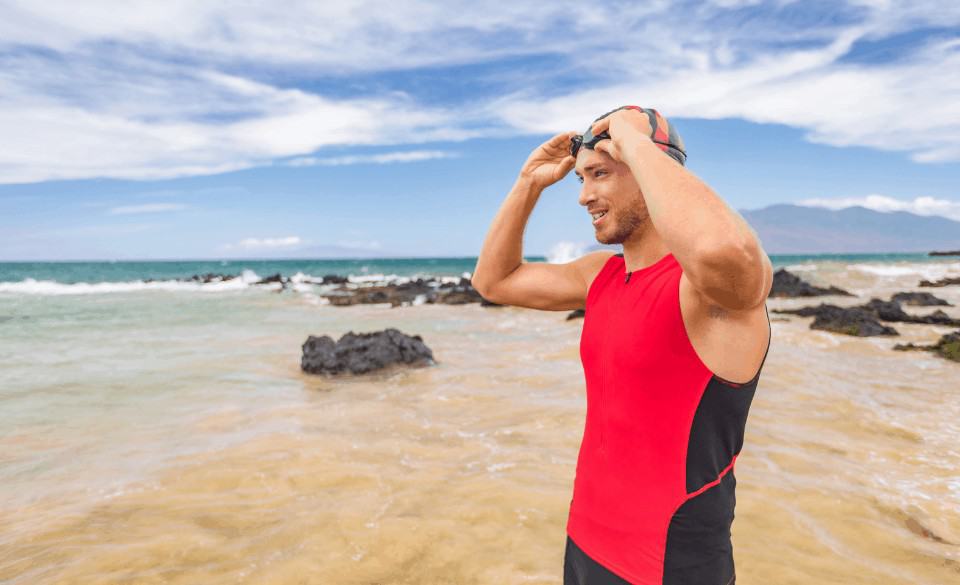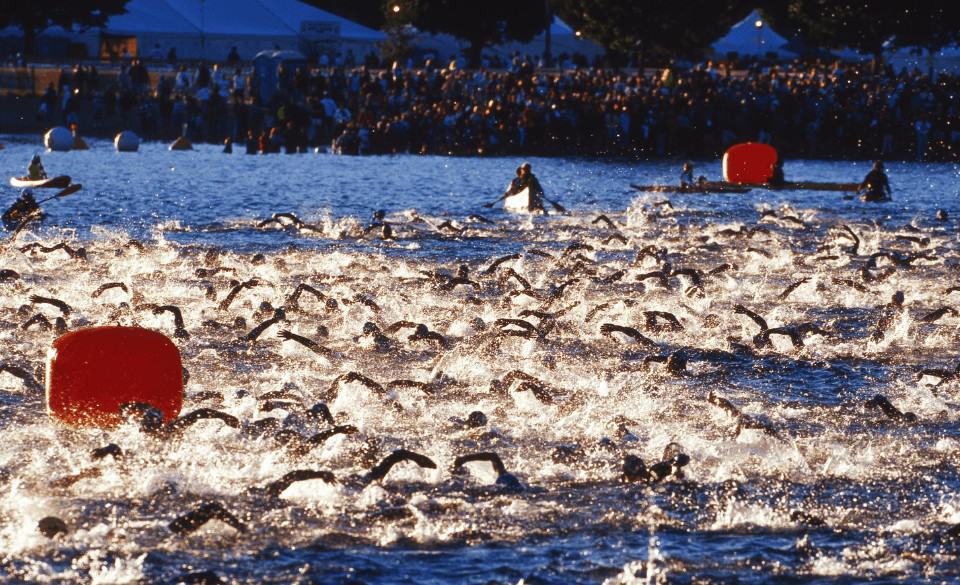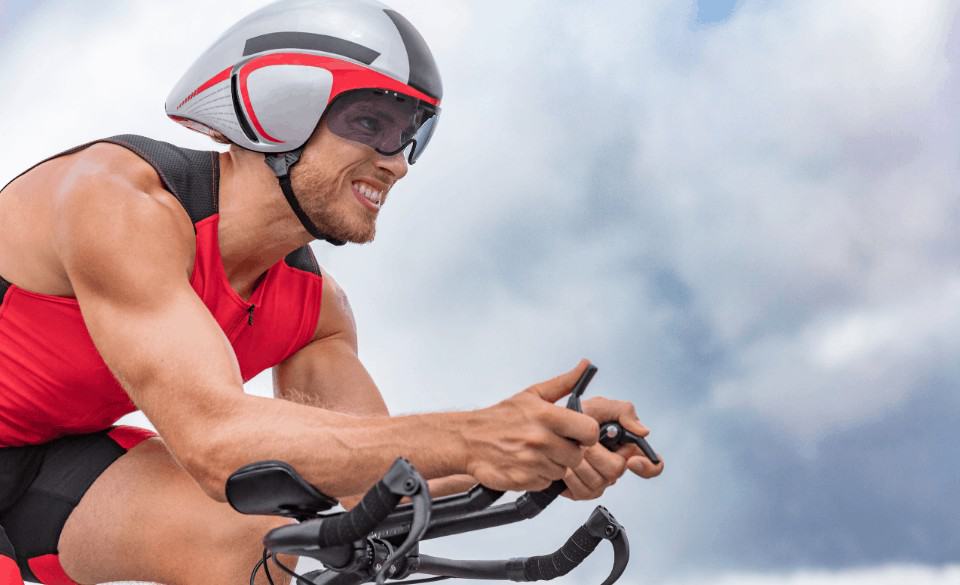
What Are The Ironman 70.3 Distances – UPDATED – Ironman 70.3 Cut Off Times
Ironman 70.3 Cut Off Times
If you have completed your first sprint or Olympic triathlon you may be looking for a new challenge. Ironman 70.3 is the next logical step to take but what are the Ironman 70.3 Distances?
The sprint and Olympic distances may lack in duration but the intensity of these events makes up for it. As you move to Ironman 70.3 you will find the distances increase substantially.
The Ironman 70.3 distances are split into 3 disciplines, a 1.9km (1.2-mile) swim, 90km (56-mile) bike, and 21.1km (13.1-mile) run.
For the average athlete, this will mean you will be racing for 5-7 hours. But there are many variables such as age, gender, conditions, and terrain that can have a major effect on your race time.
While the Ironman 70.3 distances are set in stone, the event is often called a half Ironman. This is typically when the event isn’t run by World Triathlon Corporation (WTC). The 70.3 branding is because of the total distance involved and the branding of the event under WTC.
The World Triathlon Corporation (WTC) organizes many events under the 70.3 umbrella, such as Ironman 70.3 Japan, Ironman 70.3 Ecuador, and Ironman 70.3 Boulder. The company puts on over 170 triathlons worldwide each year.
Ironman 70.3 Swim Cut Off Time: 1 hour 10 minutes.
Ironman 70.3 bike cut off time: 5 hours and 30 minutes
The total 70.3 cut off time is: 8 hours and 30 minutes after the final wave. Each athlete will have 8 hours and 30 minutes to complete event.
So now since you know the 70.3 Ironman cut off times for each discipline we can look into each discipline of a Half Ironman or a 70.3 Triathlon.

70.3 Ironman Swim
Like many events in triathlon, the 70.3 Ironman Swim presents many challenges for the athlete. Here we break down a little more of the conditions you may face.
Sea Swimming
The greatest challenge for any competitor is the swell and waves during the swim. this can have an adverse effect on the athlete’s stroke, sighting, and breathing. When it comes to sea swimming, a faster stroke turnover is critical to stay efficient in these conditions.
Focus on sighting more often and practice head up drills during your pool training.
Remember to teach yourself to breathe bilaterally so you can cope with waves coming in different directions.
River swimming
River swimming can provide a different type of challenge to sea swimming. the key during a 70.3 river swim is positioning. Try to position yourself in the middle of the river so you can make use of the deeper water when going downstream. This will help you swim faster, rather than staying to the side where the water is rather shallow.
When you are swimming against the current try to place yourself near the sides where the water moves slower. You can practice this during your indoor swimming training by focusing on staying on one side of the lane.
Lake swimming
Lake swimming during an Ironman 70.3 poses less risk for the beginner triathlete. The water is usually calmer than the ocean and river, thus giving you more control over your stroke.
While you are maybe able to control your stroke better in a lake, your sighting becomes more crucial. The lack of waves and current means you can focus on a more streamlined position but make sure you keep sight, as it’s easy to over swim by sighting wrong.

70.3 Bike
If you are moving up from an Olympic distance triathlon you are adding another 40km to the distance. So it is important to keep your nutrition in check and constantly fuel every 30 minutes. After the transition from the swim try to get into a rhythm of eating and hydrating directly and keep to a schedule throughout the Ironman 70.3 bike.
Hydration is the key during these longer events, focus on drinking between 500ml-1,000ml each hour. The warmer it is or the more you sweat means you should be in the upper range of those numbers.
As for nutrition focus on 60-90g of carbohydrates per hour. Practice this in training and find the number of carbohydrates your body can digest during a 90km ride. Focus on eating foods such as banana’s, energy bars, rice cakes, and energy gels.
Pacing during an Ironman 70.3 is crucial to having a good run off the bike. You should look to hold around 76-82% of your maximum heart rate. If you are a beginner, try to be at the lower end of those numbers.
If you are a more serious triathlete and use a power meter, focus on 75-90% of your FTP.
Remember for your first Ironman 70.3 event or Half Ironman, aim to complete an event where the bike course is flat before you tackle a hard triathlon course such as Lanzarote.
Ironman 70.3 Run
The Ironman 70.3 run is the last piece of the puzzle before you complete your first half Ironman. You will start to feel the fatigue from the swim and run. In the first 5 miles of the run, it is important to settle into a rhythm and focus on your stride. Break the run into segments where you can focus on each part at a time.
Once you hit the middle section of the run, focus on maintaining good form and constantly putting carbohydrates back into the body. This will allow you to hold a strong pace to the finish line.
Again try to implement 60-90g of carbohydrates per hour during the run while taking in 300-600ml of fluid. This can be either water or electrolyte drink. But ideally, try to mix the two so you don’t inherit any stomach problems.



